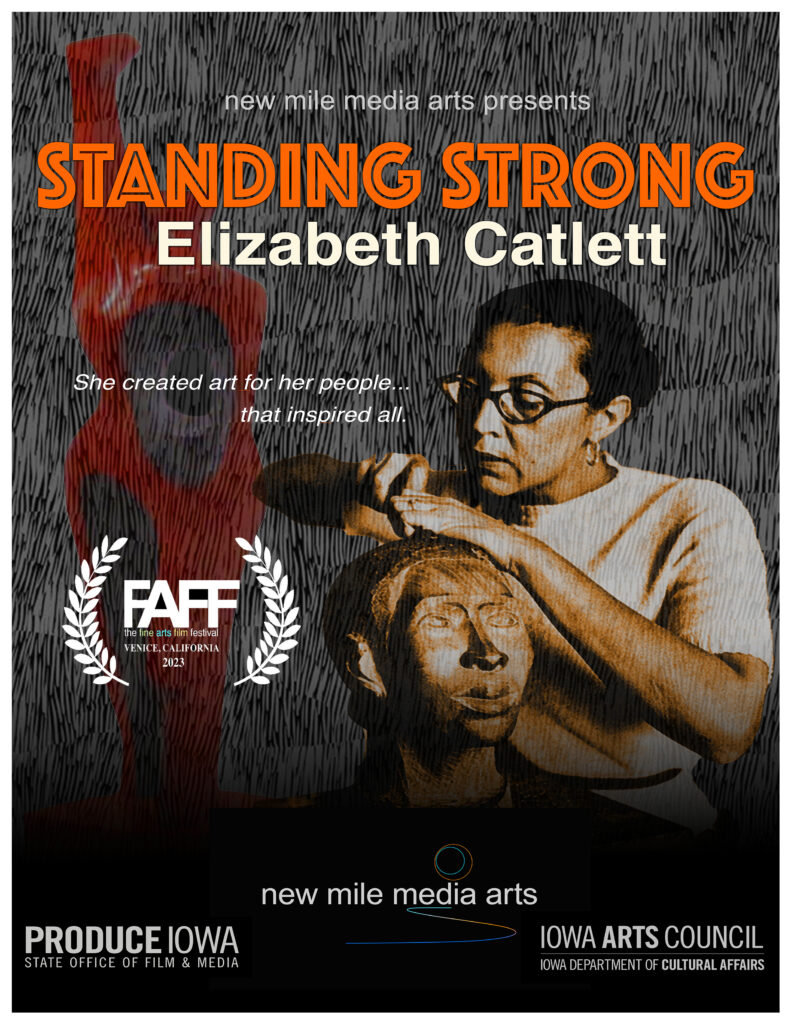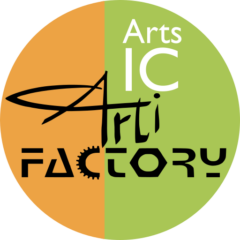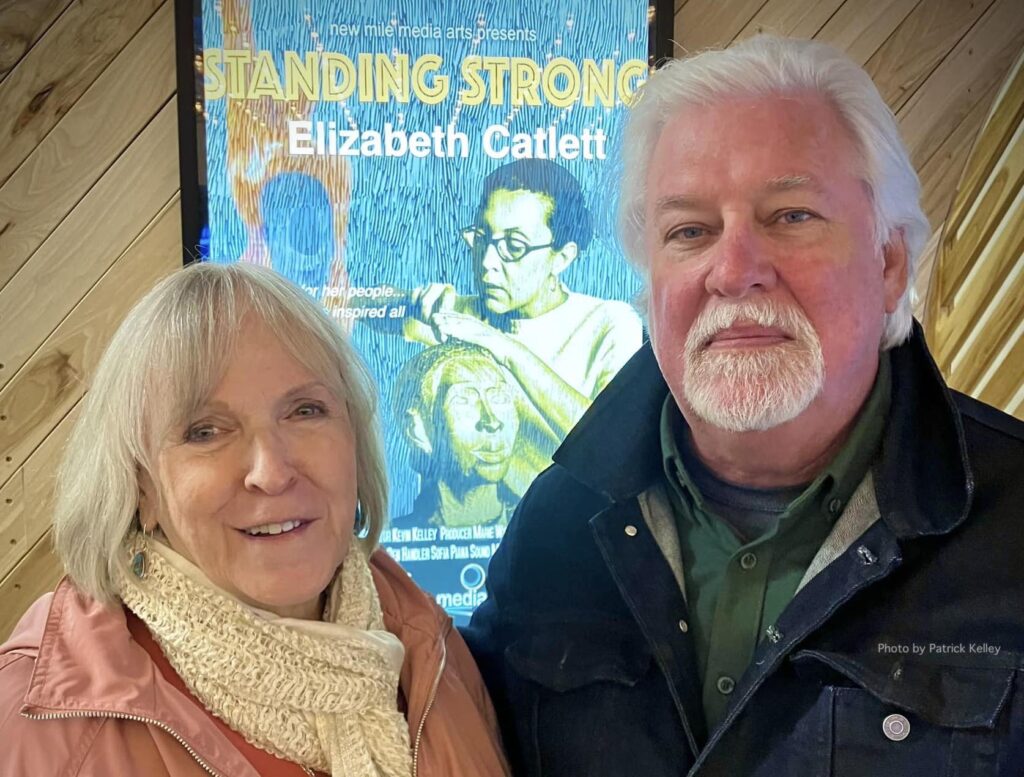
Hello Dear Art Friends,
I hope your spring is getting off to a smashing start at last. Three weeks of drought then a torrential . . . but lest this turn into an essay on the trials and tribulations of Iowa gardening I’ll move right along.
Last weekend the Iowa Artists State Show was held in the Newton Arboretum. This takes place after all 13 regions have held their shows, and all first place winners meet at state for the last go-round. Our region 8 was represented by 4 artists. I won a blue ribbon for my little oil painting of Ella, done at a Long Pose session last year in our space at 120 N. Dubuque. Robert Miklo won a second prize for his oil painting “Four Square”. (This one would have had a first if I had been judge.)

In 1979, Robert went to college at the U of I on an art scholarship, and changed his major after a few semesters of being taught nothing. He painted nothing for 40 years until he retired from a career as a city planner in 2022. His studio is in his home and he paints from photographs he takes. “Four Square” is a house near Solon which he passes on bike rides. A friend mentioned that it had an Edward Hopper look to it so he painted Hopper’s wife in the bay window. Robert’s ability to disregard the detail and simplify the subject gives this bright painting real punch.
Around town, North Liberty Library is showing work of one of our former exhibitors, Kimberlee Rocca,

and Naser and Patricia Shahrivar.

The Foiling show will be up in our gallery through the 21st, so if you haven’t seen it you still can. Come to Art in the Afternoon on the 21st at one o’clock and learn about this printmaking technique developed here at the U of I.


Gilded Ginkgo by Mei-Ling Joiner | Grain Mill by Helene Donta
Coming up soon in Washington Iowa, is the annual Plein Aire weekend June 9-11. If you have wanted to try painting on location, this is a nice way to start. It’s a pretty small town, lovely people, a nice little gallery, and Dodici’s, a great restaurant, next door.
I want to close this month’s letter with a story from Philadelphia. St. Paul’s Presbyterian church was built in 1901. It’s a huge sprawling Gothic Revival pile and was in serious disrepair. The new owners wanted to turn it into a modern place of worship and community center so they got busy gutting the rotting interior woodwork, light fixtures and windows. Paul Brown, an architectural salvager offered to take twelve stained glass windows and other stuff …. Including two rose windows …. off the new owners hands for $6,000.

It took a month to remove the rose windows, and having escaped the wrecking ball, went to Freeman’s Auction house for appraisal. Here it was discovered that they were made by the Louis Comfort Tiffany company and are extremely rare. From there, they went to be cleaned and restored, and will be sold at auction May 18, with an estimated value of between $150-$250 thousand each.
The church itself may not be so lucky. Restoration has come to a stop due to lack of funds and its future is very uncertain.
All from me this month. Be well, (plant gardens) and make art. Beppie

[civievent_widget title=”Foiled Paperworks” wtheme=”divider” divider=” | ” limit=20 summary=0 event_type_id=13]
Maybe you are a First-time Foiler or returning for Foiled Again! Experience fine art foiling in our studio group. The creation of foiled paperworks typically involves the use of metallic or pigmented foil to add decorative elements to your artwork. This could include adding metallic accents to drawings or paintings, or using foil to create unique textures or patterns on the surface of the art piece.

[civievent_widget title=”with Jo Myers-Walker” wtheme=”divider” divider=” | ” limit=20 summary=0 event_type_id=15]
The figure is captivating and expressive but is in need of a sense of place. We will be working from photos, sketches as well as still life setups. Omer Sanan and Jo Myers-Walker will demonstrate techniques in drawing, watercolor and monochromatic value studies. There will be a short demo leaving time for walk arounds while the paint is drying. In an atmosphere of fun and enjoyment we can all learn from each other.

Join us for life drawing in the lower level of 120 N. Dubuque St., Iowa City, IA. Bring your own drawing materials which can include graphite, charcoal, pastels or watercolors. Acrylics, water-based oils, and regular oils using odorless terpenoid will be allowed. We will be drawing from nude, scantily clothed or dressed models. Must be over 18 to attend.
Please register for each session.
[civievent_widget title=”Phil Dorothy Studio Group” wtheme=”divider” divider=” | ” limit=20 summary=0 event_type_id=7]
[civievent_widget title=”Long Pose Studio Group” wtheme=”divider” divider=” | ” limit=20 summary=0 event_type_id=11]
[civievent_widget title=”Body Parts” wtheme=”divider” divider=” | ” limit=20 summary=0 event_type_id=10]
Beppie Weiss will share her drawing experience of the human body. She has drawn and painted hundreds, maybe thousands, of portraits and people drawings, and will help you improve your own drawing skills. Our goal will be to understand how it all comes together, and be able to draw it with more accuracy.

–Phil Beck

It’s exciting when a new film about an artist comes out, but when that film is made by local filmmakers and the subject has close ties to local history, it’s even more of a special event. This is the case with Standing Strong: Elizabeth Catlett, an hour-long documentary about the pioneering artist Elizabeth Catlett which premiered last month at FilmScene in Iowa City and the Cedar Rapids Independent Film Festival. Catlett, the first African-American woman to earn a Master of Fine Arts degree at the University of Iowa, studied under Grant Wood from 1938-1940. The university’s newest residence hall, which opened in 2015, is named after her. The movie comes from the distinguished local filmmaking team of Kevin Kelley (director) and Marie Wilkes (producer). They’re responsible for two other art-themed documentaries with an Iowa connection, Mural (2015) about the landmark Jackson Pollock painting that’s been part of the UI’s art collection since 1951, and Stout Hearted (2020) concerning Monuments Man George Stout, who was born in Winterset, Iowa. Standing Strong continues in the tradition of those excellent films.
Catlett, a world-renowned sculptor and printmaker, was an influential figure in the Black Arts Movement of the 1960s and 1970s, a crucial period when black artists, along with Civil Rights activists, challenged racism in American society by asserting the importance and beauty of black culture and identity. Catlett was both. An outspoken supporter of civil rights, she was harassed by the U.S. government along with so many others of the time. She moved to Mexico in 1946 and became a citizen in 1962 after the U.S. denied her reentry as an “undesirable alien.” Though her U.S. citizenship was restored in 2002, she lived the rest of her life in her adopted country, teaching sculpture and creating her profound works of art. She died in 2012 at 96.
Her time in Iowa was significant, and recognition of it has been growing over the past several years. In addition to naming the dorm after her—a fitting tribute since she was denied university housing on the segregated campus in the 1930s—the new Stanley Museum is home to a collection of her prints, including the iconic linoleum cut Sharecropper (1952 or 1957). The Stanley partnered with Wilkes and Kelley to arrange for the screenings at FilmScene. The pair also singled out the support of former UI administrators Jo and Phillip Jones, who have a long history championing recognition of Catlett’s presence here at Iowa.
Unfortunately, I was not able to see Standing Strong in April, but Kevin and Marie graciously allowed me to ask them a few questions about their experience making the film and Catlett’s importance as an artist. They agreed that Standing Strong challenged them in ways their previous films hadn’t. It took four years to complete, partly due to interruptions during the pandemic and partly to the complicated logistics of interviewing people all over the country. Some who knew Catlett are advanced in age, which presented additional complications.
There are also legal matters. They have permission from the Artists Rights Society (ARS) and Catlett’s estate to use the images of her work for only one year, which limits the time they can exhibit the film during its initial release. After that year, they must renegotiate for the rights to show Catlett’s work. They feel optimistic they’ll succeed based on the enthusiastic response the film has been receiving, but because nothing is certain, they’re working continuously to get it shown.
Beyond those issues, however, are more sensitive matters. Marie noted the caution they took in not imposing their perspective as white filmmakers on the experiences of a black artist or black history. “We wanted to honor the culture as well as the artist,” she said. Interviewees tell their own stories, share memories and insights, and the film’s shape follows them, not a prescribed narrative. Positive word of mouth from early interviewees resulted in more people being willing to talk to them, which was gratifying. The Catlett family has been very supportive as well, both during production and in response to the finished work.
When I asked them how best to describe Catlett’s significance as an artist, they stated unequivocally that it’s her dual role as artist-activist. She very deliberately created her artworks as expressions of the triumphant spirit and humanity of black people in this country. She used her art to proclaim to the world that black lives matter. Marie pointed to the monumental scale of her sculptures in cities like New York, Chicago, Atlanta, and Washington, D.C.—such as Students Aspire (1977) on the campus of Howard University–which serve as testaments to African-Americans’ achievements and aspirations.
Her influence on other artists is immeasurable. Kevin put it this way: “She was the Black Arts movement before there was a Black Arts movement.” But it isn’t only artists she inspired. Her ability to infuse portraits of ordinary people with heroic dignity is one of the hallmarks of her work. She’s especially known for her depictions of strong, resilient women, unbowed by the hardships of their lives. Pride in her race and pride in her sex go hand in hand in her art. In sculptures like Mother and Child (1939) and Standing Strong (2008), and in portraits like Sharecropper and Head of a Woman (1967), she lends an almost mythic quality to the humanity of black women. It seems impossible that there are still those who would deny it. The good news is they can’t.
So, how does one see this film? Check the Facebook page of New Mile Media Arts for updates on the latest screenings. NMMA is the filmmaking non-profit Kelley and Wilkes founded in 2016. We can only hope there are many more fine films to come from this creative pair.
Elizabeth Catlett on Film: Standing Strong: Elizabeth Catlett (2023)
Seen any of these films? Tell us what you think of them, or suggest others not covered in the newsletter.
Our Mission
To create a place in Iowa City for education, practice, exhibition and collaboration in fine arts and crafts. Get involved and help support our mission.

